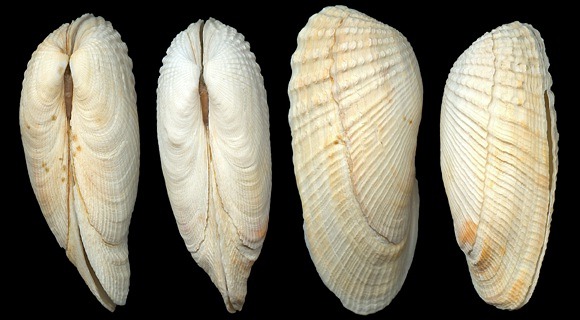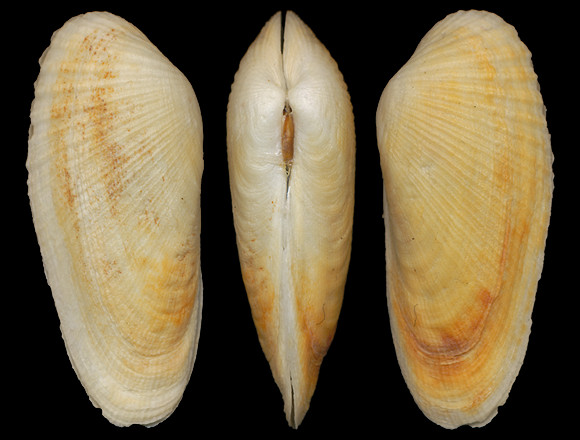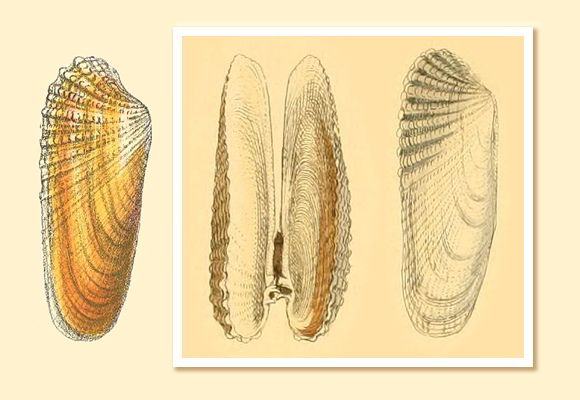
Gulf of St-Lawrence to Uruguay, Norway to Congo, to Baltic, to Mediterranean & Black Sea. Native to NW. Atlantic, the species was accidentally introduced on the southern coast of England in 1890, from where its larvaes gradually colonized the eastern side of the ocean. Arrived in Mediterranean in 1994
(DORIS). Burrowed in soft rocks and consolidated marly-muddy sediments, sometimes in wood or old tyres, from the intertidal zone down to 10m deep. Has completely superseded Barnea candida in the SE. North Sea (CIESM).
A specimen from Istria. 53-55mm.

At low tide in muddy sand, Sinken Meadow State Park, Suffolk county, New York, NW. USA. 54mm.

Conch. systematica at left — Conch. iconica at right.
« Shell oblong, subcylindrical ; anteriorly rounded, very short, rayed with strong, distant, rather square ribs ; elongated posteriorly, obliquely rayed with sharp, elevated, close riblets, attenuated at the end. […] The external appearance of this well-known species is that of a Pholas ; and it is only the absence of the subumbonal processes and accessory valves that distinguishes it, as far as the shell goes, from that family. » – L. A. Reeve: Conchologia iconica vol. XIX, London 1874, via BHL.